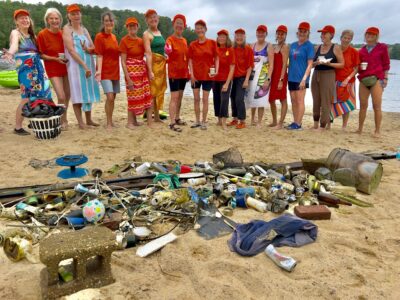The town of Marquette is a lot like many others in the Midwest. Located on the Upper Peninsula of Michigan, it has a lot of things going for it. Though the population is the largest in the peninsula, it’s low enough at 20,000 not to feel overwhelmed, like in many metropolitan areas around the country. Marquette is also a harbor town right off the southern coast of Lake Superior.
Like much of Michigan, Wisconsin and Minnesota, the winters can make you question whether or not humans should even be living here. But the summers are quietly some of the most enjoyable in the nation. Marquette has all of that, plus one very curious seasonal tradition that is sure to raise some eyebrows: the city cordons off roads daily to make way for the safe passage of salamanders.
Yes, it’s as odd as it sounds. Each spring, Marquette shuts down traffic in Presque Isle Park for 12 hours every night to not interrupt the migration patterns of blue-spotted salamanders native to the region. The shutdown occurs mainly on Peter White Drive and is effective from 8 p.m. to 8 a.m. through April 15. Foot traffic is certainly still permitted, but the risk of moving cars coming across groups of salamanders, which directly cross the road at night, has been deemed too high by the local government.
The shutdown was a product of efforts from concerned environmentalists within the town. It all started in 2018 when student Eli Bieri began tracking a rough number of salamanders killed after being hit by unsuspecting drivers at night. To his dismay, the total quickly grew into the hundreds. The city finally took action in 2020, amidst growing evidence that the salamander was more than an interesting-looking nuisance.
Blue-spotted salamanders do much more for their environment than simply being shiny food for a few snakes or birds. “… they are an indicator species, informing us about the health of our environment,” Kathleen Henry told The Mining Journal.
She works for the Superior Watershed Partnership as a special projects coordinator and special education specialist. Depending on the level of salamanders observed in the wild, specialists can determine the overall status of that ecosystem. According to Henry, the impact of the close was immediate: amazingly, only three salamander fatalities were confirmed during the 2020 migration season.
Beyond indicator species status, blue-spotted salamanders exist as living tanks for capturing carbon from the environment. Their diets consist of worms, slugs, snails, and insects. Many of these creatures produce leaf litter, adding carbon to the atmosphere. By eating these bugs, many of which also carry disease and are considered pests, salamanders are preventing a significant amount of carbon from entering the environment.





